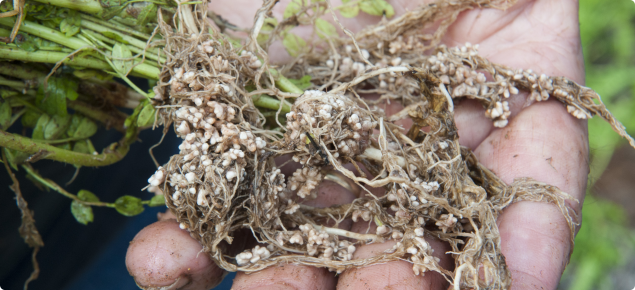Types of inoculants
Inoculants come in four different carriers:
- peat
- freeze dried powders
- granular
- a pre-coated seed form, with inoculum as part of the pellet.
All forms of inoculant carry live cells of rhizobia and must be stored correctly to preserve high numbers. The shelf life of these products varies from several weeks in the case of some pre-coated seeds to three years for the freeze dried powder.
The cost of inoculation can vary from $5-25/ha depending on the product. Peat-slurry is the cheapest form of inoculant to purchase but there are additional costs in time and labour to consider. The more expensive options can be easier to use and offer greater flexibility for sowing operations.
Peat-slurry inoculants
For traditional peat-based carriers, the inoculum is applied as a slurry to the seed coat so that rhizobia are in direct contact with the seed. Packet size of inoculant is generally 250g and this amount is recommended to treat between 10-50kg of pasture seed (Table 1). When seeding mixtures of different pasture legume seeds, each cultivar should be inoculated separately and then mixed together.
| Inoculant group | Common name | Scientific name | Seed size | Maximum weight of seed to be treated |
|---|---|---|---|---|
| AL | Lucerne | Medicago sativa | Small | 25kg# |
| AL | Strand medic | M. littoralis | Small | 25kg |
| AM | Burr medic | M. polymorpha | Medium | 50kg |
| AM | Barrel medic | M. truncatula | Medium | 50kg |
| Bis | Biserrula | Biserrula pelecinus | Small | 10kg# |
| B | White clover | Trifolium repens | Small | 25kg |
| B | Strawberry clover | T. fragiferum | Small | 25kg |
| C | Balansa clover | T. michelianum | Small | 25kg |
| C | Persian clover | T. resupinatum | Small | 25kg |
| C | Gland clover | T. glanduliferum | Small | 25kg |
| C | Arrowleaf clover | T. vesiculosum | Small | 25kg |
| C | Subterranean clover | T. subterraneum | Medium | 50kg |
| C | Rose clover | T. hirtum | Medium | 50kg |
| C | Crimson clover | T. incarnatum | Medium | 50kg |
| C | Bladder clover | T. spumosum | Medium | 50kg |
| S | French serradella | Ornithopus sativus | Medium | 50kg |
| S | Yellow serradella | O. compressus | Medium | 50kg |
| Sulla | Sulla | Hedysarium coronarium | Medium | 10kg# |
# Pasture legume requires higher inoculation rates because of either small seed size, poor survival of rhizobia during inoculation or sensitivity of the symbiosis to low pH soils.

